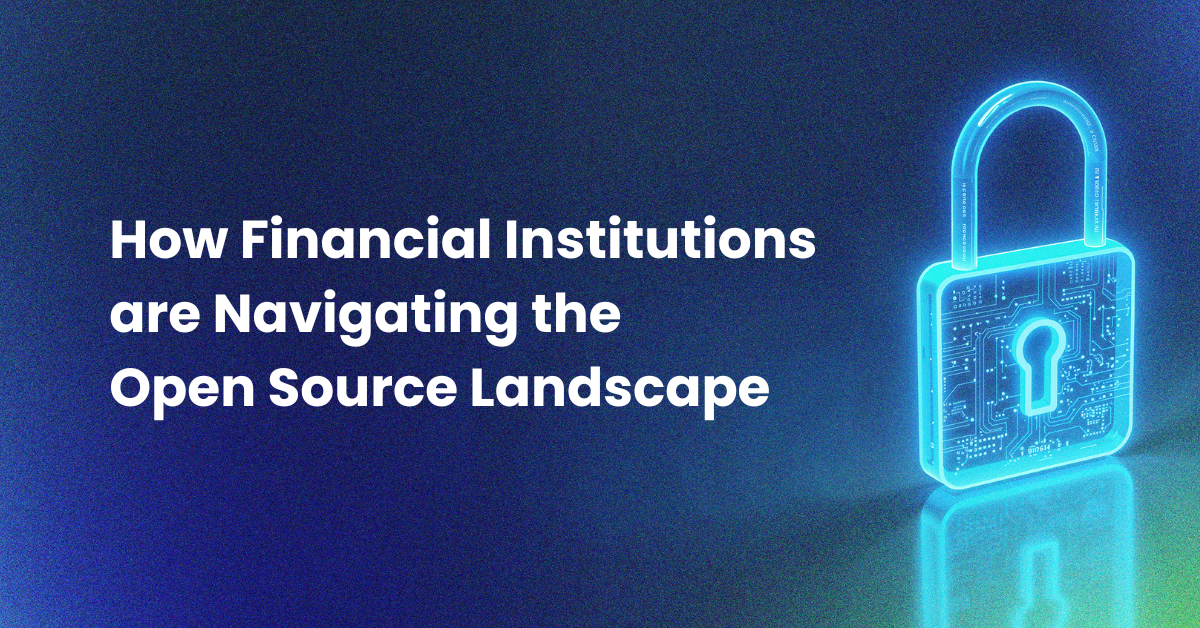The financial services sector operates under a unique confluence of stringent regulatory demands, the need to safeguard vast amounts of sensitive data, and the imperative to innovate in an increasingly digital world. Within this complex environment, open source software has become a cornerstone of modern application development, offering agility and a vast ecosystem of tools and libraries. However, this reliance also introduces significant challenges, particularly in the realm of software supply chain security and vulnerability management. Many financial institutions are acutely aware of the inherent risks and are proactively seeking solutions to navigate this evolving landscape, recognizing the critical need to address the last mile in vulnerability management and remediation.
The Growing Concern Over Software Supply Chain Risks
One of the primary concerns for financial organizations is mitigating software supply chain risks. The interconnected nature of modern software means that a vulnerability in a single open source component can potentially compromise an entire application and its downstream systems. For institutions that manage substantial financial assets, even a minor security breach can have catastrophic consequences, both financially and reputationally. Therefore, ensuring a secure and trusted source for open source components is not merely a best practice but a fundamental security imperative. They understand the dangers lurking in public repositories, from typosquatted packages mimicking legitimate ones to the introduction of outright malicious code. The need extends beyond just downloading packages; it encompasses verifying the provenance and integrity of every component used, ensuring that the software supply chain remains uncompromised from development to deployment.
Recognizing the Vulnerability Management Gap
Financial firms recognize that a significant hurdle lies in effectively bridging the gap between the identification of a vulnerability alert and its successful deployment as a tested and verified fix. They acknowledge that traditional, piecemeal approaches often fall short. Partial security solutions, offering limited ecosystem coverage and shallow dependency analysis, can lead to a false sense of security, leaving critical vulnerabilities unaddressed. They are also aware that simply receiving alerts isn’t the same as taking action; most security tools stop at detection, leaving teams with endless lists of vulnerabilities and the manual burden of implementing fixes. The ultimate realization is that deployment is the only metric that truly matters; a vulnerability isn’t remediated until the fix is live in production. The stark reality is that, on average, teams can take a considerable amount of time to fully resolve vulnerabilities.
In response to these recognized challenges, a growing number of financial institutions are turning to comprehensive platforms like ActiveState to secure their software supply chains. These organizations understand the need for a holistic approach that addresses the entire vulnerability management lifecycle.
Real-World Applications in Financial Institutions
Consider the scenario of a mid-size to large regional bank managing billions in assets, building out sophisticated data science and data analytics programs. Their teams of data scientists, while proficient in analysis, often lack the deep software engineering and security expertise required to navigate the complexities of open source dependencies. This institution recognized the inherent danger of allowing these “citizen developers” unfettered access to public repositories like PyPI. They understood the potential for unintentional introduction of malicious or vulnerable packages. Their solution was to establish a core safe upstream provider through a platform like ActiveState. By curating their open source needs through the ActiveState platform and embedding it into all their applications, they ensured that all Python installations and distributions originated from a trusted source. This effectively eliminated the risk of employees inadvertently downloading malicious or typosquatted packages, bolstering their overall security posture.
Another critical area where financial institutions are leveraging platforms like ActiveState is in ensuring the security of core programming languages like Perl, often deeply embedded in their legacy systems. Faced with evolving regulatory landscapes, such as the EU requirements for Software Bill of Materials (SBOMs) and updates to regulations like DORA, these institutions require a secure supply chain for even their established technologies. One financial organization entered into an OEM agreement to secure their Perl deployments through a platform that provides a secure supply chain, meeting the stringent European standards for SBOMs. Similarly, another prominent financial institution has relied on a secure supply chain for Perl for over a decade, embedding it into all their systems to meet EU requirements, particularly in light of significant regulatory updates. This demonstrates a clear understanding of the ongoing need to secure even well-established technologies against modern supply chain threats.
These real-world scenarios highlight how financial institutions recognize the limitations of traditional approaches and are adopting platforms like ActiveState that deliver three critical capabilities to secure their software supply chains:
- Proprietary dependency intelligence: This capability is crucial for uncovering hidden vulnerabilities within the complex web of direct and transitive dependencies. Financial firms understand that standard security scans might miss vulnerabilities buried deep within the dependency tree. By leveraging a comprehensive open source database, platforms like ActiveState provide unmatched visibility into their organization’s open source landscape, allowing them to understand their vulnerability blast radius – the full scope and impact of vulnerabilities across their systems. This deep insight enables them to identify vulnerabilities at their root and understand their cascading impact, a level of visibility often lacking in traditional tools.
- Risk-based analysis: Financial institutions are overwhelmed by the sheer volume of vulnerability alerts and recognize the need to prioritize real threats effectively. Platforms like ActiveState utilize AI-powered analysis to help security teams cut through the noise and focus on what truly matters. This includes proactive breaking change detection, allowing them to assess how updates will affect their systems before deployment, and intelligent risk prioritization based on factors beyond just a CVSS score. This ensures that remediation efforts are focused on the vulnerabilities that pose the most significant risk to their specific environment and business operations.
- Tested remediation fixes: Ultimately, financial organizations need solutions that not only identify vulnerabilities but also provide tested remediation fixes delivered directly into their existing toolchains. Platforms like ActiveState address the “last mile” challenge by offering a Precision Remediation Pipeline designed to automatically apply tested fixes, speeding up deployment and reducing the manual effort required by development teams. This includes automated component-level intervention to provide permanent fixes and secure build generation to create trustworthy builds from source in hardened environments. By automating the remediation process from vulnerability identification to the delivery of secure artifacts, these platforms help financial institutions significantly reduce the time it takes to address critical vulnerabilities, moving from months to potentially hours.
Seamless Integration and Collaboration
Furthermore, platforms like ActiveState are designed to integrate seamlessly into the existing development lifecycle (SDLC) of financial institutions. This allows for cross-organization collaboration amongst teams, providing a full view and understanding of dependency trees. By managing the entire SDLC, from artifact repositories to CI/CD pipelines, these platforms enable DevSecOps teams to work more effectively together, lowering costs and improving communication while securing the software supply chain.
Meeting stringent regulatory requirements becomes more manageable with the ActiveState platform by providing SBOM generation and attestations on demand to prove security. ActiveState can automatically comply with emerging government regulations and streamline internal security reviews.
The ActiveState platform increases developer productivity by reducing the time developers spend managing vulnerabilities and upgrading dependencies. It can reclaim 30% of developers’ time wasted on manual dependency triage. By automating vulnerability detection and remediation, it decreases both Mean Time To Resolve (MTTR) and Mean Time To Detect (MTTD). This allows developers to focus on building features instead of fixing code, as ActiveState handles first-party code refactoring.
Implementing the ActiveState platform can lead to significant operational cost savings by streamlining the vulnerability management process. It helps cut incident response times from months to hours with automated, auditable workflows. By proactively managing open source risks and securing the software supply chain, ActiveState minimizes the risk of costly security breaches, contributing to overall cost reduction.
For financial institutions with complex and long-standing legacy systems, ActiveState can provide crucial support for older programming language versions like Python and Perl, ensuring continued stability and security. ActiveState has been providing Perl through a secure supply chain for over a decade for financial institutions like Tesco Bank, helping them meet EU requirements. Finova has built a custom modern-Perl with ActiveState for connections to different database systems and less common systems like AIX, supporting their multi-system operations.
Embracing the Open Source Future
In conclusion, financial institutions are increasingly recognizing the inherent challenges and risks associated with open source software, particularly the critical gap in effectively managing and remediating vulnerabilities – the “last mile.” By adopting comprehensive platforms like ActiveState, which offer deep dependency intelligence, intelligent risk prioritization, and automated precision remediation, these organizations are moving beyond traditional, reactive approaches towards a proactive and robust security posture. Real-world scenarios demonstrate how these platforms are being utilized to secure data science environments, ensure the integrity of core programming languages, and meet stringent regulatory demands. Ultimately, the goal is to transform open source from a potential liability into a strategic asset, enabling financial institutions to innovate securely and efficiently in the years to come.
To gain a deeper understanding of the challenges and solutions in this critical area, be sure to download the comprehensive 2025 State of Vulnerability Management & Remediation report for in-depth insights and actionable strategies to fortify your open source security posture.






